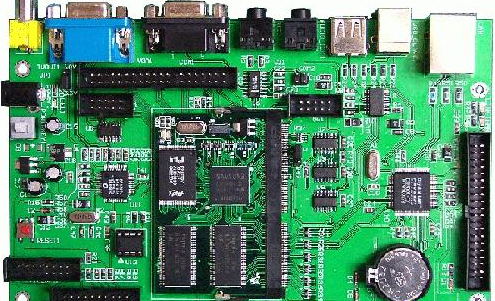SMT chip processing is a highly demanding precision electronic processing process. Electronic products have more complete functions. The integrated circuits (ICs) used have no perforated components, especially large-scale, highly integrated ICs, so surface mount chips have to be used. element. Strictly speaking, a complete PCBA circuit board is not a simple board, it is a collection of high-tech. From up to hundreds of thousands of light-years out of the aircraft, as small as the remote control used at home, the chip is as small as 5mm, and then integrated into the circuit board through SMT chip processing and DIP plug-in post-welding, so as to achieve a variety of Kind of function.
In electronic processing factories, there are many things worth noting about the soldering process. For example,

the surface of the metal to be soldered and the surface of the pad need to be carefully cleaned, otherwise the soldering effect of theS MT patch may be affected. Flux: A chemical substance that can help and promote the soldering process during the soldering process, and at the same time has a protective effect and prevents oxidation reactions. Flux can be divided into solid, liquid and gas. It mainly has several aspects such as auxiliary heat conduction, removing oxides, reducing the surface tension of the material to be welded, "removing oil on the surface of the material being welded, increasing the welding area, and preventing re-oxidation. Among these aspects, there are two key functions. That is: to remove oxides and reduce the surface tension of the material to be soldered. There is an auxiliary raw material between the chip components and the solder paste, that is, the flux. Next, I will explain what flux is.
1. Features
1. It should have good thermal stability. Generally, the thermal stability temperature is not less than 100°C.
2. The flux should fully exert its required effects just before the welding material melts.
Second, the role
1. Promote heat transfer to the welding area.
2. Remove the oxide on the surface of the welded metal.
3. Prevent the high temperature re-oxidation of the metal surface during welding.
4. Maintain the continuity of the surface layer of the welding raw materials for SMT patch processing, improve the heat resistance of the welding material, improve the wettability, and improve the solderability.
Three, composition
1. Additives The additives mainly include corrosion inhibitors, surfactants, thixotropic agents and matting agents.
2. In rosin SMT foundry materials, general rosin, as a pure natural flux, is the most suitable raw material for flux recognized at this stage.
3. Solvent Solvents are mainly ethanol, isopropanol, etc. The effect is to dissolve the liquid or liquid components in the organic solvent, adjust the relative density, viscosity, circulation, heat resistance and maintenance efficiency.
4. Activating agent The activating agent is also a strong reducing agent, whose main function is to purify the solder and the surface of the welded part. The content is 1%--5%. Generally used are organic chemical amines and ammonia compounds, citric acid and salts and organic chemical halides.
5. Film formers are now commonly used in SMT patch processing. The demulsifiers are classified into two categories according to their ingredients. The category is natural resin, and the other is resin materials and some organic compounds. The key to demulsifiers is to maintain spot welding. And base steel plate, so that it has anti-corrosion and dielectric strength.